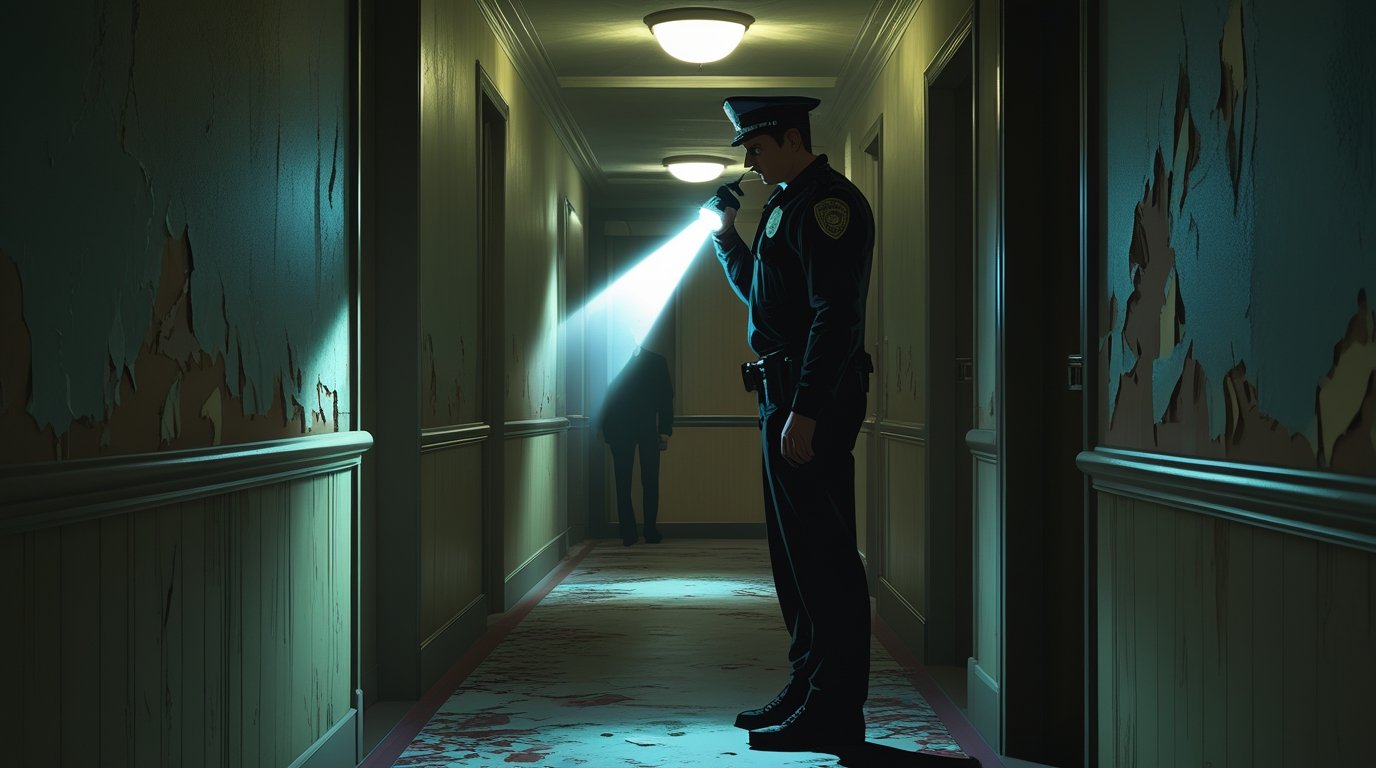Field Note Entry – February 19, 2013
Los Angeles, California
It was the call that changed everything.
I was reviewing missing persons cases, sipping bitter gas station coffee when dispatch sent me to the Cecil Hotel. “Another Jane Doe in a tank,” they said. I thought it was another overdose, maybe even suicide—until I climbed up that creaking rooftop ladder, peered into that dark, foul-smelling tank, and saw the pale figure floating face-up. That was my first glimpse of Elisa Lam.
This story is not just about a death. It’s about shadows that don’t belong to anyone, a girl whose final moments seemed choreographed by something unseen, and a hotel with a history soaked in madness. But what haunts me most? The elevator footage. I can’t forget it.
The Girl Who Vanished: Elisa Lam’s Last Known Movements

Elisa Lam, a 21-year-old student from Vancouver, arrived in Los Angeles on January 26, 2013. A bright, introspective girl battling bipolar disorder, she was traveling alone—her Tumblr posts detailed her excitement and vulnerability.
She checked into the notorious Cecil Hotel on Main Street, once known for hosting serial killers like Richard Ramirez. It was also infamous for suicides and unsolved deaths. Elisa was originally placed in a shared room, but was moved to a private one after her roommates complained about her “odd behavior.”
Then, she vanished.
For days, hotel staff and guests noticed strange things: water pressure issues, discolored water, a “strange taste.” It wasn’t until February 19 that a maintenance worker found her naked body inside a rooftop water tank. No clothes, no obvious wounds, no clear cause.
Security footage captured her last known sighting in the hotel’s elevator. The footage was eerie: Elisa entered, pressed buttons, peeked out like she was hiding, and made unusual gestures—as if she was communicating with someone invisible.
Clues in the Shadows: What the Autopsy Didn’t Say

The coroner’s report listed her death as accidental drowning, complicated by her bipolar disorder. No signs of physical trauma, no alcohol or illicit drugs. Her toxicology report showed only trace amounts of her prescription medication—less than therapeutic levels.
But how did she end up inside a locked, alarmed, 8-foot-high water tank that required a ladder and heavy lid to access?
Police said there was no evidence of foul play. Yet, I recall the maintenance worker’s testimony: the lid was closed when he discovered the body. Police later contradicted this. Why the inconsistency?
Hotel staff claimed the rooftop door alarm never triggered. But an anonymous letter I received—unsigned, smudged in ash—claimed the alarm had malfunctioned for months.
“Check the black wire under the panel,” it said.
When I did, I found it. Sliced clean.
Elevator Rituals and Parallel Realities: An Uncommon Theory

Online forums exploded after the elevator footage was released. Some believed Elisa was playing the infamous “Elevator Game,” a paranormal ritual said to open a doorway to another dimension. It originated in Korea and required a precise sequence of elevator floors.
Curious, I recreated the game inside the Cecil’s elevator. At the fifth floor, the doors opened, but no one was there. Yet the atmosphere shifted—colder, heavy. I felt watched. When I reached the tenth floor, the elevator didn’t respond for ten full seconds.
Was Elisa trying the same ritual? A recovered page from her notebook—pages LAPD didn’t log—showed doodles of elevators, numbers, and a crude sketch of a stairwell spiraling upward like a helix. Next to it: “Must go alone.”
A Hotel with a Haunted Pulse
The Cecil Hotel’s dark past reads like a horror anthology. At least 16 documented deaths, some from suicides, others unexplained. One guest claimed to see Elisa’s ghost weeks after her death—wet footprints leading from the elevator to the stairwell, vanishing at the roof.
I interviewed a former night clerk. “The elevator’s not just broken,” he told me. “It’s alive. It doesn’t always go where you ask it to.”
His voice cracked. “We had another case in ’98. A maid died in the tank. Almost identical. It was ruled ‘accidental’ too.”
That report is missing from police archives.
The Missing Minute: A Digital Manipulation?

The public version of the elevator footage is edited—at least one minute is missing. Why? The timestamp jumps, her movements glitch.
An LAPD tech who contacted me anonymously claimed the original file showed Elisa reacting to something outside the elevator—a shadow moving quickly past the frame. “They were told to delete it,” he said. “Classified as a ‘psychotic episode’ to avoid panic.”
Was someone—or something—following her?
I still have a flash drive with that unedited file. I’ve watched it over a hundred times. In frame 553, a reflection briefly appears in the elevator panel. It’s not Elisa’s.
Final Entry: The Notebook in Room 412
After Elisa’s body was found, her belongings were returned to her family. But one item wasn’t logged: a red notebook.
Weeks later, I found it tucked behind a loose board in Room 412—her final room. Inside were sketches of submerged buildings, stairwells that led into the sky, and phrases like “He’s in the water” and “I almost made it back.”
One page was torn out. On the back cover, in shaky handwriting:
“The door opened but I stayed. That’s how he found me.”
Unanswered Questions: What Really Happened to Elisa Lam?
Despite the autopsy and police statements, questions remain. How did she access the tank alone? Why the missing elevator footage? Who or what was Elisa hiding from?
We may never know if she was running from a real person, her own mind, or something unseen. But one thing is certain: her story continues to haunt.
Every time I pass the Cecil Hotel, I hear the echo of elevator chimes. And sometimes, if the air is just right, I swear I see her—stepping into the elevator again.
But this time, she doesn’t come back.




